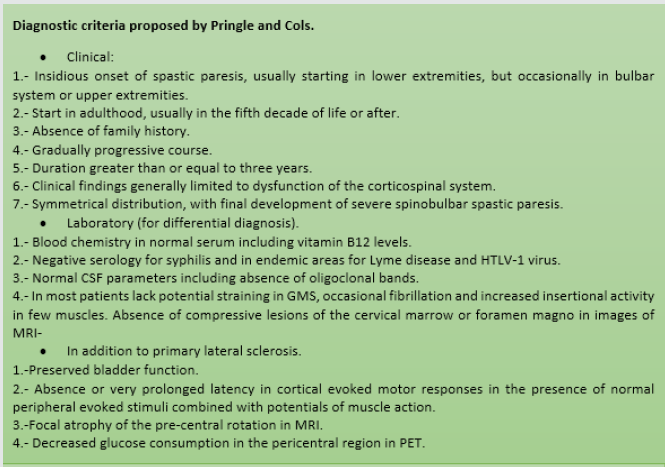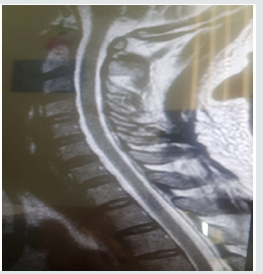Lupine Publishers| Journal of Neurology and Brain Disorders
Abstract
Recent research suggests
that schizophrenia is associated with the development of an advanced aging
phenotype (carbonyl stress) and erythrocytes from schizophrenics also exhibit
symptoms of cellular aging (increased levels of glycated proteins and ubiquitinated
proteins), possibly due to excessive glycolysis-induced methylglyoxal (MG)
generation. The endogenous dipeptide carnosine (beta-alanyl-L-histidine), which
can delay cellular aging, suppress glycolysis and inhibit MG-induced protein
glycation, also exerts some beneficial effects towards schizophrenia. Carnosine
is present in human erythrocytes and the olfactory bulb (olfactory dysfunction
is associated with schizophrenia). It is suggested that enhanced erythrocyte
and olfactory carnosine levels may be more therapeutic towards schizophrenia,
if carnosine was also administered intra-nasally to avoid serum carnosinase
activity.
Keywords:Carnosine;
glycation; methylglyoxal; erythrocyte; aging; nasal administration
Introduction
Schizophrenia and carbonyl stress
Many studies have
indicated a relationship between schizophrenia and dysfunctional energy
metabolism [1-3] whilst others indicate that carbonyl stress and generation of
advanced glycation end-products (AGEs) accompany schizophrenia [4,5]. Furthermore,
a recent study suggests that changes in glycolysis and accelerated cellular
aging in glial cells contribute to the condition [6]. The glycolytic
intermediates glyceraldehyde-3-phosphate and dihydroxyacetone-phosphate are the
most likely sources of AGE formation due to their ability to spontaneously
decompose into methylglyoxal (MG). MG is well recognized as a major glycating
agent and is thought to be responsible for much macromolecular modifications
associated with type-2 diabetes and age-related neurodegenerative conditions
[7,8]. However, there is no clear evidence whether suppression of MG
generation, via decreased glycolytic activity, has any effect on schizophrenia.
The suggestion that schizophrenia seems to be associated with accelerated cellular
aging [6] is supported by another recent observation reporting that
erythrocytes obtained from schizophrenics contain elevated mounts of
ubiquitinated proteins [9]. This might arise from either increased generation
of targets for ubiquitination (e.g. aberrant polypeptides or denatured
misfolded proteins), or decreased de-ubiquitinating activity, or decreased
proteasomal proteolytic activity which would normally complete polypeptide
destruction. Interestingly, MG and other agents responsible for carbonyl stress,
also induce protein cross-linking which not only renders the target protein
less susceptible to proteolytic attack but can also result in inhibition of
proteasome activity generally [10]. Thus, it is conceivable that excessive
glycolysis can provoke an aging phenotype (AGE accumulation and proteostatic
dysfunction) via increased MG generation; such a relationship has been
demonstrated in mice fed a high glycemic- index diet [11]. Never-the-less it is
necessary to show whether glycation compromises proteostatic in erythrocytes
from schizophrenics.
Erythrocytes and schizophrenia
A number of recent
papers have revealed that erythrocytes obtained from patients with neurological
problems, such as Alzheimer’s Disease (AD) and Parkinson’s Disease (PD), exhibit
symptoms typical of aging cells in general. For example, compromised
proteolytic activity and MG detoxification were detected in AD erythrocytes
[12] and accumulation of aggregated protein occurs in red cells from PD
patients [13]. Furthermore, dysfunctional energy metabolism, especially in
relation to glycolysis culminating in carbonyl stress, are now regarded as
characteristics of both AD and PD [14,15]. Therefore, it is not surprising that
evidence of carbonyl stress is also accompanied by enhanced protein glycation
[16] and accumulation of ubiquitinated proteins [9] in erythrocytes (and
possibly other cells) obtained from schizophrenic individuals [17]. Moreover,
one of the glycated proteins from “schizophrenic” red cells has been identified
as a selenium-binding protein (SBP1) [18]; dysfunctional selenium metabolism
has long been regarded as an important contributor to schizophrenia [19,20].
Selenium plays an important role in Sulphur metabolism required for synthesis
of antioxidant enzymes such as glutathione peroxidase [21]. Thus, one is
beginning to understand the relationship between AGE generation, carbonyl and
oxidative stress and the apparently disparate biochemical attributes to
schizophrenia.
Carnosine, carbonyl stress and schizophrenia
That erythrocytes can
contain elevated amounts of MG and glycated proteins suggests the possibility
that such red cells could become systemic sources of MG and AGEs to the brain
and other tissues, following MG-induced eryptosis [22]. Consequently, it is
important to consider whether suppression of carbonyl stress, not only in
erythrocytes but in astrocytes and glia, could possibly be a therapeutic
strategy. The naturally occurring dipeptide carnosine (beta-alanyl-L-histidine)
has been shown to suppress glycolysis in cultured cells [23,24], delay
replicative senescence [25], stimulate proteolysis of long-lived proteins in
late passage cells [26] and inhibit AGE formation [27]. Furthermore, there is
one study showing that schizophrenics subjected to dietary supplementation with
carnosine exhibited some beneficial effects [28], possibly due to the
dipeptide’s pluripotent properties [29]. It is also interesting to note that
a) Olfactory dysfunction
is also associated with schizophrenia [30,31] and
b) Carnosine is enriched
in the olfactory bulb [32].
Thus, one has to
consider whether raising olfactory carnosine levels could also be useful.
However, all studies employing dietary carnosine supplementation are subject to
the problem of the presence of serum carnosinase activity which would destroy
the dipeptide [33]. There is an alternative route however, which is to use an
intra-nasal approach. This could involve a nasal spray of a carnosine solution;
another approach could involve use of carnosine powder. Indeed “snorting”
carnosine could be far more useful than most white powders some people use, be
it illegal drugs or “medicinal snuff “of old. In fact, intra-nasal delivery of
potential therapeutic agents is currently being explored [34] with respect to
neurodegenerative conditions, as proposed many years ago [35].
Carnosine has been
detected in human erythrocytes [36] but in lower amounts when obtained from
elderly individuals [36]. It is presumed that red cell carnosine is synthesized
(from betaalanine and histidine) during erythropoiesis. Consequently, it would
be useful to determine whether dietary supplementation with carnosine or
beta-alanine raises erythrocyte carnosine levels and whether there are any
beneficial effects with respect to the recognized changes in “schizophrenic”
erythrocytes. Additionally, it is suggested that any carnosine (dietary or
nasally administered) supplementation period should last for at least 120 days
to ensure maximal numbers of carnosine-enriched erythrocytes. It has been
proposed that excessive and continuous glycolysis in erythrocytes enhances red
cell MG levels, and thus also facilitate delivery of erythrocyte MG to the
tissues including the brain [22]. Consequently, it will be also important to
determine whether such supplementation protocols decrease carbonyl stress and
MG levels not only in red cells but the tissues generally including glia [6].







